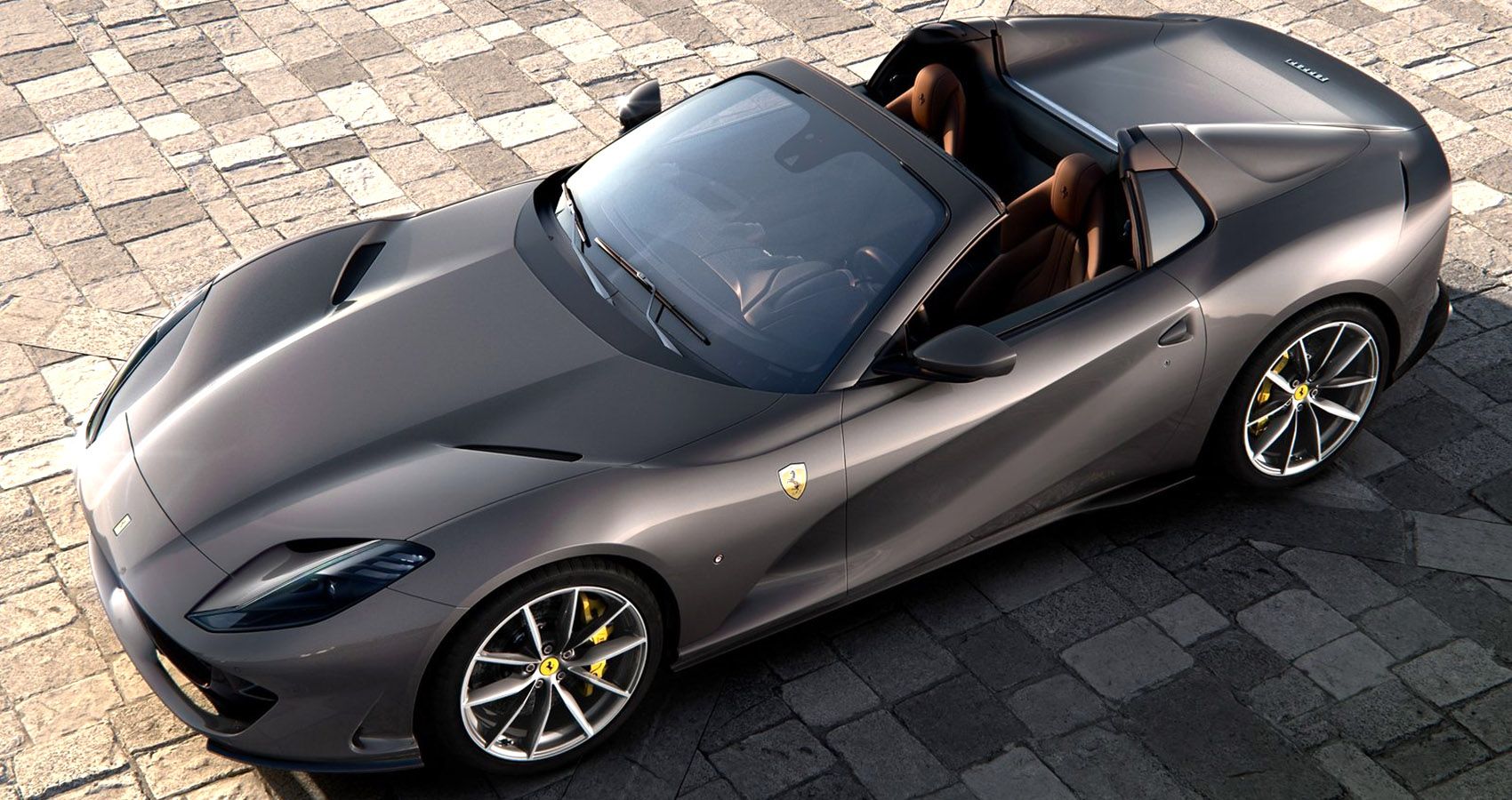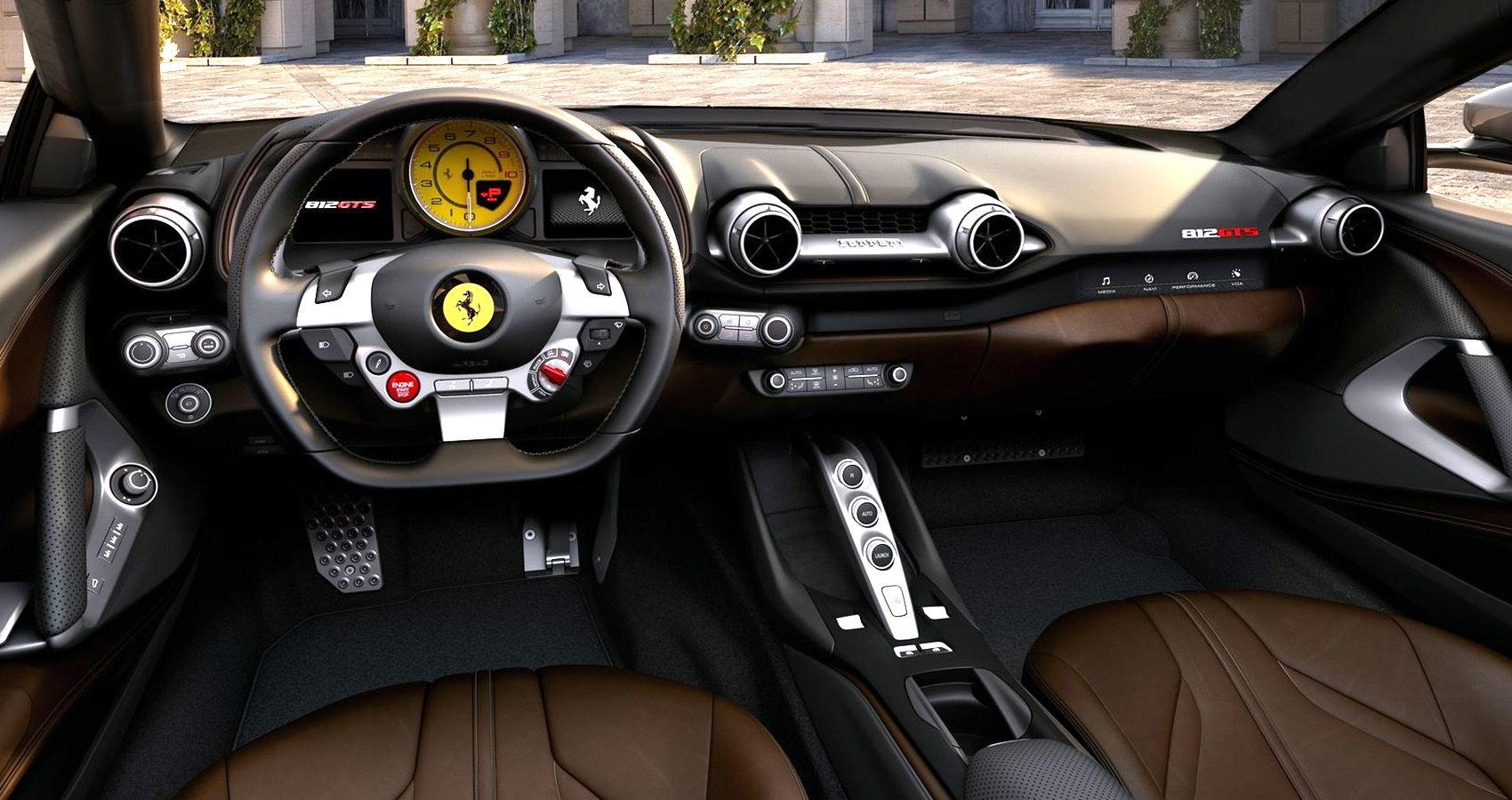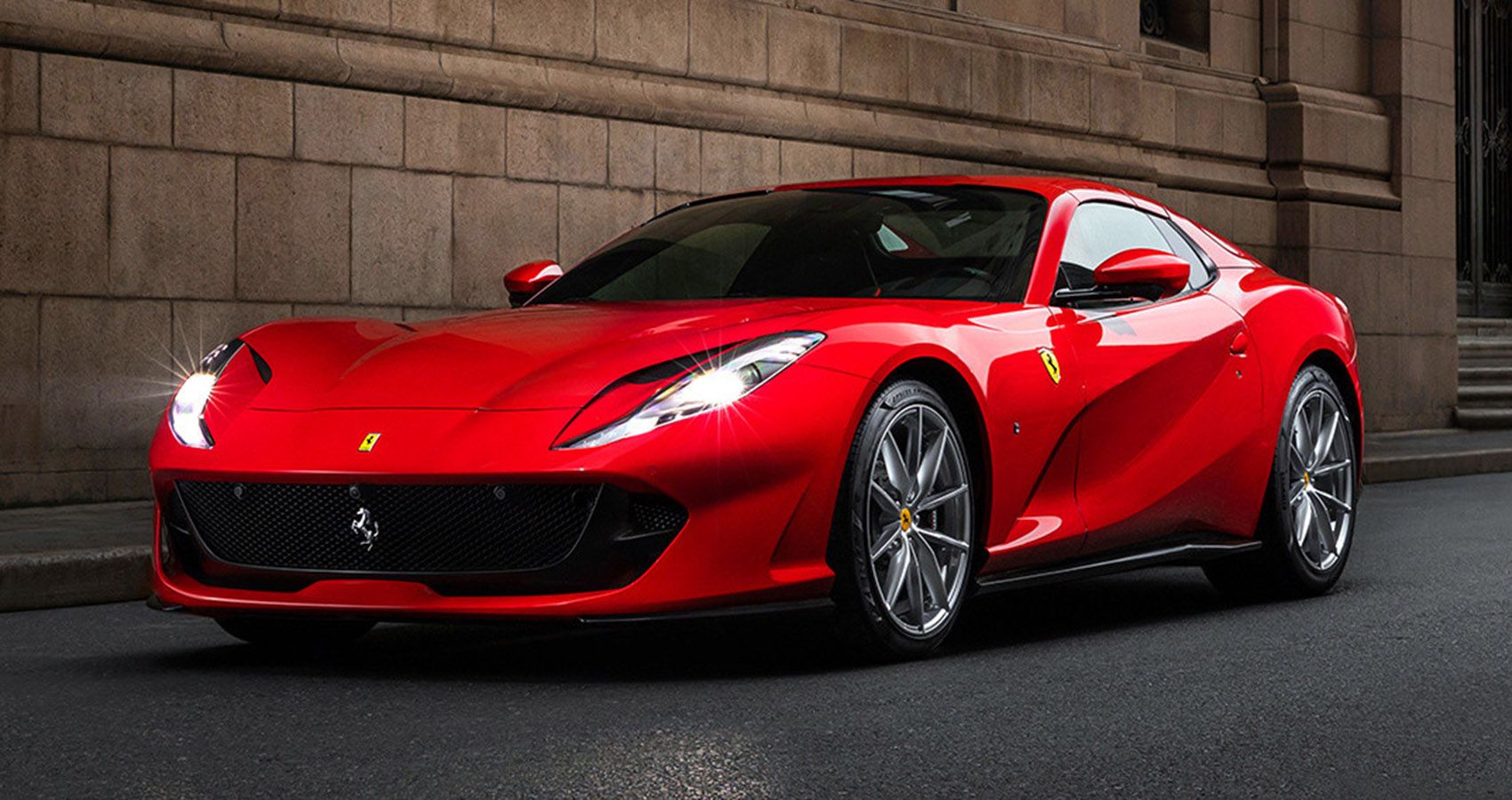Fifty years after the debut of the last series Ferrari spider (the 1969 Ferrari 365 GTS4, referred to as the Daytona Spyder because commemorated the Ferrari victory at the 1967 24 Hours of Daytona), the Ferrari 812 GTS becomes the sole model in the 812 series for 2023.
The Grand Touring series debuted in 2017 with the full-bodied 812 Superfast, and included the track-only supercar. Competizione coupe and convertible models, as well as the one-off Omologata and the limited-production Monza SP1 and SP2 dream cars (with the numbers denoting the number of seats).
The Ferrari 812 GTS is the ultra-luxury, high-performance competitor for the Aston Martin DBS Superleggera Volante, Lamborghini Huracán Performante Spyder, McLaren 720s Spider and Porsche 911 Turbo S Cabriolet, and like its rivals, has loads of style and over-the-top performance to match.
1. 2023 Ferrari 812 GTS
9.00 / 10
- Sound and power of V12
- Racetrack bred dynamics
- Prestige
SPECIFICATIONS
- Trim: GTS
- Model: 812
- Engine/Motor: 6.5-Liter DOHC V12
- Horsepower: 810 Horsepower @ 8,500 RPM
- Torque: 530 Pound-Feet @ 7,000 RPM
- Drivetrain: RWD
- Transmission: 7-Speed Dual-Clutch Automatic
- MSRP: $401,500
PROS
- Breathtaking acceleration
- Flawless exterior design
- Coupe/convertible in one package
CONS
- Performance can’t be appreciated on real-world roads
- Stratospheric entry price point
- Poor fuel economy
812 GTS Proves There’s Nothing Like Sound And Fury Of Ferrari V123 Images

If you ask anybody to imitate the sound of a performance car going by, chances are they would reproduce the high-revving sound of a Ferrari engine and it would be almost spot on with the 6.5-liter V12 housed under the hood of the Ferrari 812 GTS – the open-cabin version of the 812 Superfast introduced in 2017.
The red line sits at 8,900 rpm. The 810 horsepower output peaks slightly shy of that, at 8,500 rpm, though you’re likely to blow right by it and start bouncing off the limiter. Maximum torque of 530 lb-ft peaks at 7,000 rpm, though 80% of that comes online at 3,500.
Those figures make it the most powerful engine in its class, with performance data including 0-60 mph in less than three seconds, zero to 120 in about 8.5 seconds, and a governed top speed of 211 mph. Those are impressive numbers for a car that weighs in at 3,627 lbs.
As expected, the 6.5 V12 is not a miser on gasoline, and that is also not contrary to the performance car’s intent. EPA ratings peg the 812 GTS at 12 mpg in the city and 15 on the highway, for a combined rating of 13 mpg. A stop/start feature helps.
Ferrari 812 GTS Features Traditional RWD With Non-Traditional Aids
A Getrag seven-speed dual-clutch automatic reins in the prancing ponies, with control at the driver’s fingertips through steering-wheel paddles. It is one of the adjustments through the Manettino (dial) on the steering wheel that enhances the sensation of extreme power delivered by the engine, among other things.
Exhaust harmonics enhance the sensation, with equal-length pipes converging into one for the catalytic converter and giving voice to the power that is being delivered to the rear 20-inch wheels – shod with 275/35ZR20 front tires and 315/35ZR20s in the rear.
Like any performance car worth its salt, the Ferrari 812 GTS sends engine power to the rear wheels. Unlike other performance cars, the convertible tells the driver to lighten up a little when the car is nearing its limit of grip.
Ferrari Peak Performance (FPP) first alerts the driver through steering wheel torque then adjusts the dynamic accordingly. To keep oversteer in check, Ferrari Power Oversteer (FPO) offers the same steering wheel feedback and helps realign the car correctly coming out of a corner.
The 20-inch wheels house 15-inch Brembo carbon-ceramic brake discs in the front and 14-inchers in the rear, helping to bring the 812 GTS to a halt from 60 mph in just 105 feet (397 ft, from 120).
Ferrari Technology Aids Performance And Handling Ability in 812 GTS
In addition to the FPP and FPO, the Ferrari *12 GTS also benefits from electronic aids, including Electric Power Steering (EPS), which not only takes driver input into account for its decision-making, but also makes all the other dynamic controls possible in improving the dynamics of the supercar and enhancing the richness of the drive. The 812 Superfast was the first Ferrari to employ the feature.
Introduced in the 812 Superfast (the first Ferrari to use EPS), it works in tandem with Ferrari’s latest versions of its Side Slip Control (SSC) and Virtual Short Wheelbase 2.0 (PCV) rear-wheel steering system take the guesswork out of understeer and oversteer control through corners, allowing smoother and surer control.
Mounting the engine aft of the front wheels maintains the mid-ship geometry that aids in predictable driving dynamics, preserving a near 50/50 balance (47 front and 53 rear, actually) and ensures the 812 Grand Tourers aren’t complete brutes, according to Edmunds, meant solely for long-distance point-A to point-B highway cruising.
It balances out the weight of the 812 spider, which tips the scales at 3,627 lbs (about 165 more than the Superfast berlinetta, due to the folding-top mechanism and the chassis reinforcements to minimize cowl shake), but suffers minimally from the handling data of it full-bodied sibling.
Simple Ferrari Functionality Is On Display In the 812 GTS Cabin
As with any Ferrari, the interior is functionally simple. You won’t find any large center-stack touch screens that might distract the driver from the task at hand of controlling the car. Important controls surround the driver, through their locations on the wheel or on the center console.
The most connectivity owners will find in the 812 interior is the ability to pair to Bluetooth and Apple CarPlay, which also comes with the ability to get on-board navigation (through voice controls) and music streaming through the six-speaker audio system.
The Ferrari ability to craft elegance without ostentation is also evident in the simple flowing 812 exterior, which is slightly changed between GTS and Superfast. The changes are most evident in the rear end, to account for the need to open up the cabin.
The buttresses hide the electric roof workings and serve as the rear mounting points for the roof panel, but eliminate the rear wheel arch by-pass ducts that serve to enhance downforce in the coupé, meaning the 812 convertible needed an integrated triplane wing in the rear diffuser for added downforce.
The roof panel takes just 14 seconds to stow itself under a hard tonneau behind the cabin, and does it as speeds up to 28 mph, or vice versa. However, this chops a useful 14 cubic foot trunk in the Superfast nearly in half, down to a paltry 7.5 cubic feet in the GTS.
Ferrari Balances Performance And Comfort In 812 GTS, At A Price
The end result is a Ferrari 812 that is of equal performance, whether it’s a berlinetta or spider, while maintaining occupant comfort when the convertible roof gets stowed. L-shaped flaps atop the windscreen redirect the rush of air toward the rear of the cabin where they are hardly felt inside. At greater speeds, the electrically operated rear window serves as a wind-blocker in its raised position.
In the end, you’re left with an exclusive supercar that has all the hallmarks of Ferrari performance, while granting the chance to enjoy open-top motoring. And all it requires is an outlay that is probably less attainable than most new homes.
The Ferrari 812 GTS starts at just over $400,000, and though there aren’t a lot of personalization options available, the ones that are available are also pricey, meaning you can expend upwards of half a million dollars to get the car you want, your way.












